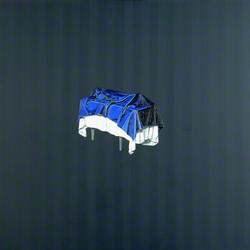How you can use this image
This image can be used for non-commercial research or private study purposes, and other UK exceptions to copyright permitted to users based in the United Kingdom under the Copyright, Designs and Patents Act 1988, as amended and revised. Any other type of use will need to be cleared with the rights holder(s).
Review the copyright credit lines that are located underneath the image, as these indicate who manages the copyright (©) within the artwork, and the photographic rights within the image.
The collection that owns the artwork may have more information on their own website about permitted uses and image licensing options.
Review our guidance pages which explain how you can reuse images, how to credit an image and how to find images in the public domain or with a Creative Commons licence available.
Notes
Add or edit a note on this artwork that only you can see. You can find notes again by going to the ‘Notes’ section of your account.
Julie Roberts trained in London, Glasgow, and, Budapest and now lives and works in southern Scotland. 'Gynæcology Chair' belongs to an early set of works, made in the early 1990s, which tackled the oppression of the female body. Here the gynæcology chair is painted in almost uncanny realism yet floats untethered upon a blue ground so that, divorced from any medical context, it starts to resemble a weapon or an instrument of torture. Roberts was inspired by the ideas of the then fashionable French poststructuralist thinker Michel Foucault and the work of contemporary feminist theorists, as philosophers such as Susan Bordo were focusing their critical writing in the early 1990s on the intersection of the female body and culture. The clinical scrutiny of the female body, while ostensibly therapeutic, simultaneously defines female bodies as objects to be disciplined and controlled.
Title
Gynæcology Chair
Date
1994
Medium
oil & acrylic on canvas
Measurements
H 152.4 x W 152.4 cm
Accession number
B1997.5
Acquisition method
Paul Mellon Fund
Work type
Painting








